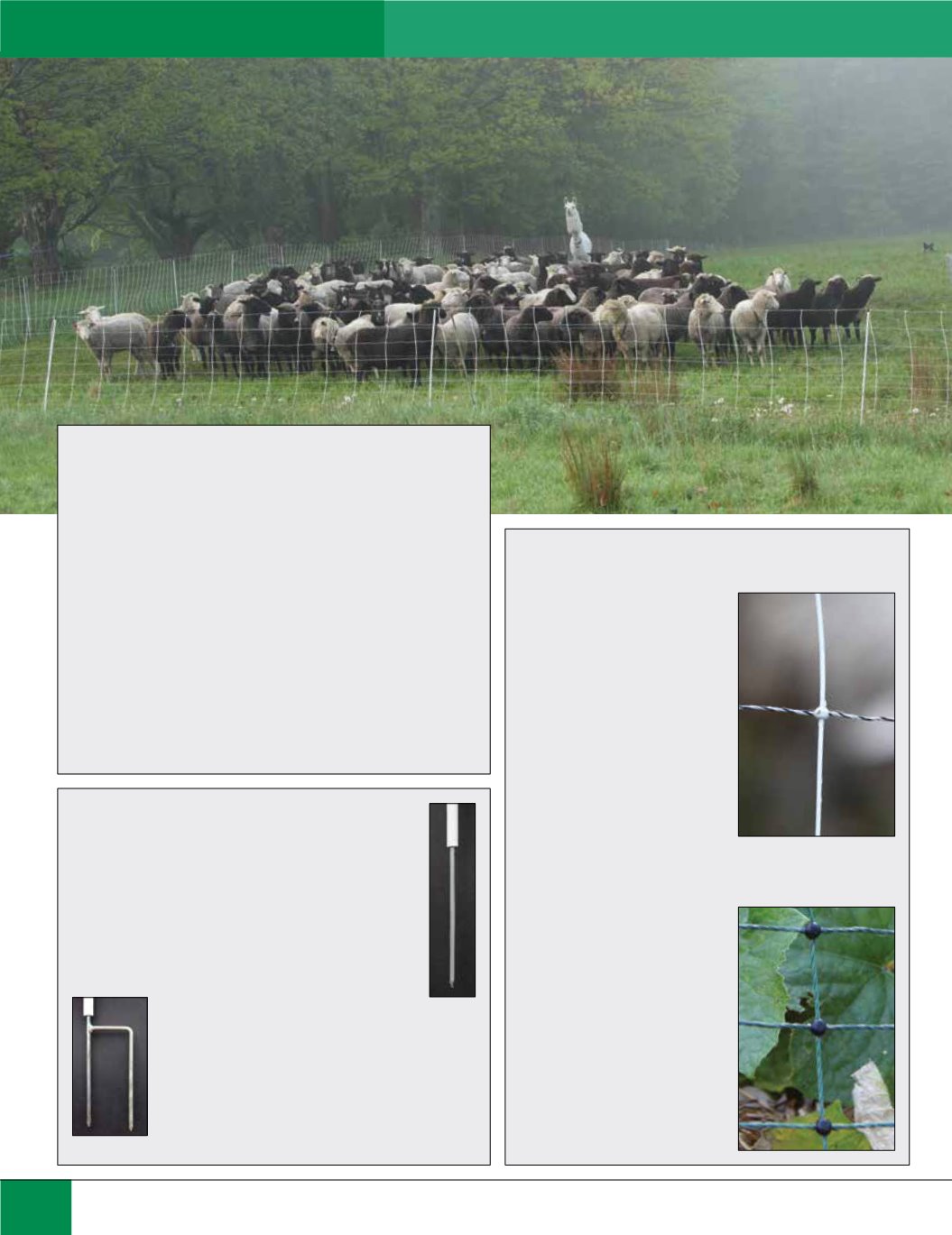
30
Electric Netting Options
Vertical Stay Types:
Strutted
:
Uses semi-rigid
plastic to hold horizontal wires
above the ground and spaced
evenly apart. Maintains the
height of the fence as it follows
the contour of the ground. Easier
to install and move around. Does
not sag as stringed nets do and
therefore is a better deterrent
against predators that may try to
jump.
Found in:
ElectroNet®,
ElectroStop®, ElectroFence™, Pig
QuikFence™, Deer QuikFence™, Horse QuikFence™, Cattle
QuikFence™.
Stringed
:
Uses similar string
found in the horizontal strands
but contains no stainless steel
conductors. Stringed nets will
bunch at the bottom when they
pass over an obstacle. This type
is used in nets that have closer
vertical stay spacing.
Found in:
VersaNet®,
PoultryNet™, and PermaNet®.
Electric Netting
New Engl and ’s Agr i cul tura l Fence Exper t s
Netting Types:
Standard:
All horizontal strands are electrified except the
bottom one which sits directly on the ground. This net is the most
common and is often referred to as “regular net.”
Quick Ground:
Has the same structure as standard net except
the bottom strand has wires wound into it that collectively serve as a
ground field for the energizer. There is a connection tab at the top and
the bottom for the fence and ground leads respectively. This netting is
great for situations where it is moved frequently.
Pos/Neg:
Every other horizontal strand beginning at the
second from the bottom has the ability to act as a positive or
negative strand. This net is generally used in very dry conditions
where animals are not well grounded. Two strands must be
touched to receive a shock. It is very important to maintain a
pos/neg net so the horizontal strands do not touch.
Post Spike Options
Single Spike:
This 6'' spike is strong enough
to support most electric netting. Depending on soil
conditions, posts can be pushed into the ground using
one or two hands grasped low on the post. Inserting a
.26 diameter net post into frozen or firmly packed soil
can be accomplished by first making a pilot hole with
duckbill drive rod (page 43) or in some cases a cordless
drill with 5/16'' bit.
Double Spike:
This option adds an
additional 6'' spike by way of a strong weld
to the first. Inserting these spikes into the ground
is easier because they can be stepped in with
your foot. However, the double stake option does
make the roll of net slightly heavier and more
cumbersome.


